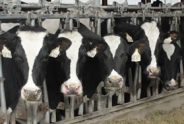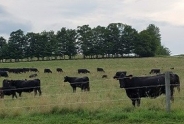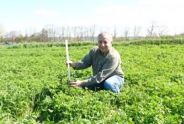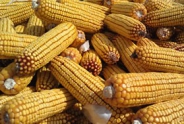Field Crop Update, July 27, 2023
Erik Smith, Area Field Crop Specialist/Team Leader
Central New York Dairy and Field Crops
1. Field Observations
At this point, I'm now seeing tassels in more than half the fields I come across throughout our region. So in preparation of corn silage harvest, we'll start tracking growing degree days from tasseling (Section 2).
Corn and soybean crops continue to look good, with low pest and disease levels so far, but this rain and humidity means that diseases are just around the corner. So now is the time to protect your soybeans from white mold (if you haven't started already) in high-risk fields as they are flowering and as canopies close.
Potato leafhopper numbers in alfalfa are continuing to elevate in some areas, particularly the southern parts of our region (section 3).
Western bean cutworm numbers continue to be higher than they have been in previous years. They are most attracted to pre-tassel corn, so hopefully we are exiting the highest-risk period for this pest.
But now is the time when perennial hayfield weeds start to make themselves known. Here is a great article from Penn State on Perennial Weed Control in Grass Forages (psu.edu)
And as you and your staff work outside over the next few days, STAY HYDRATED:
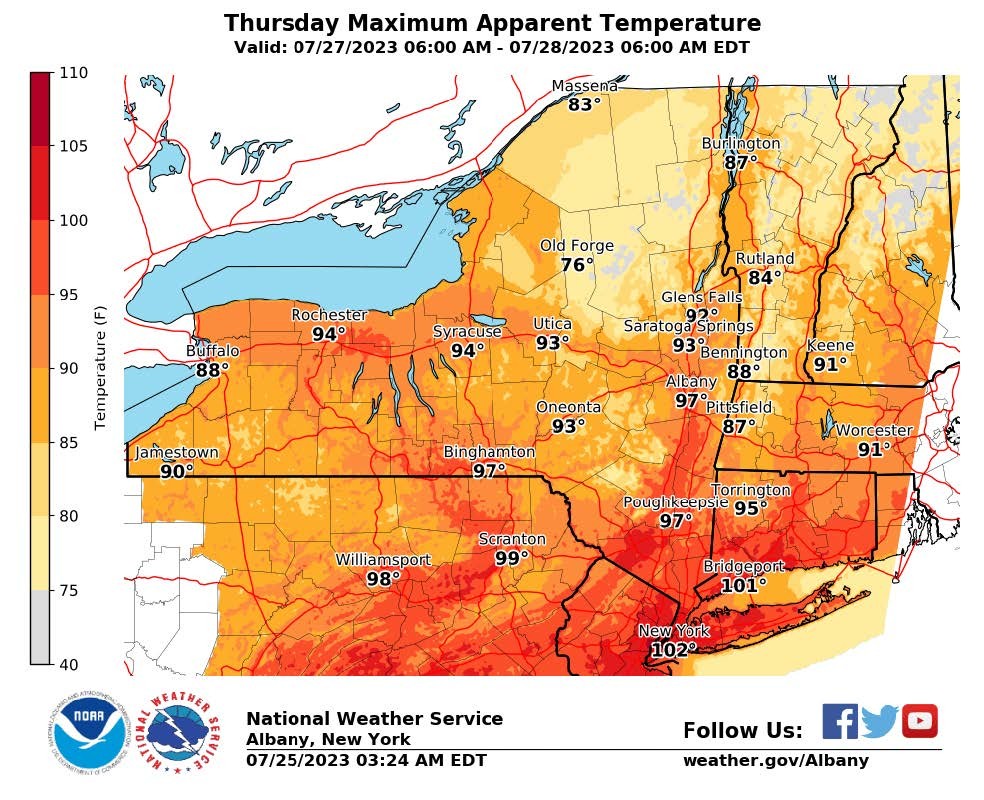
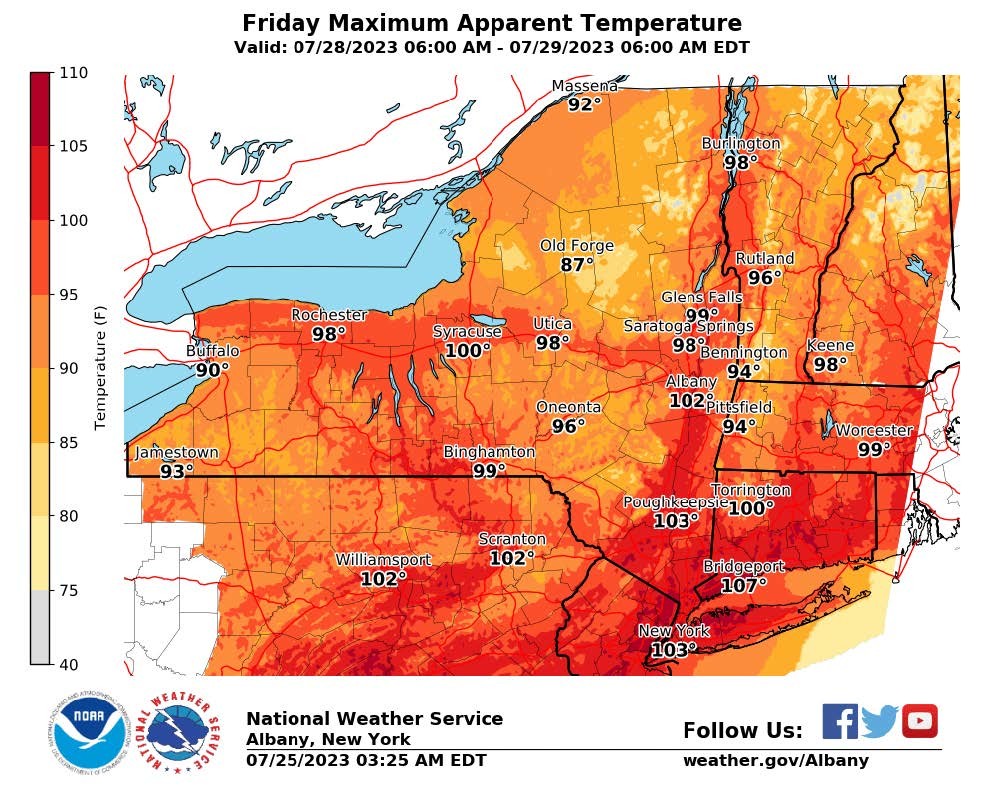
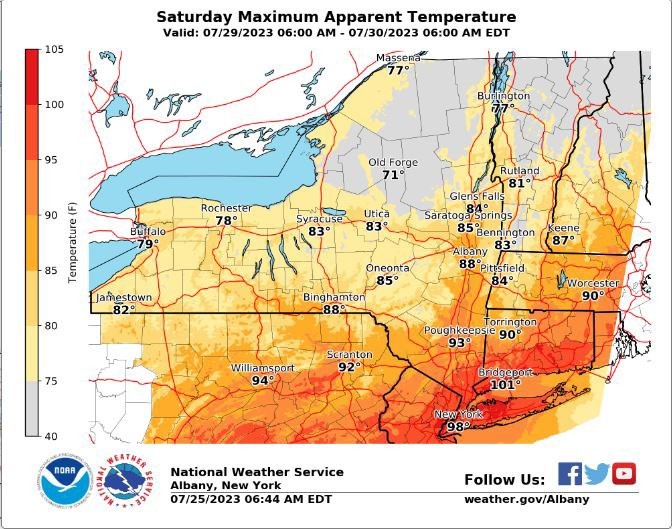
2. Growing Degree Days (See: Climate Smart Farming Growing Degree Day Calculator)
Growing degree days (GDD) are calculated by taking the average daily temperature and subtracting the base temperature for development of a given organism ((High + Low)/2 - base temp = GDD). For corn, we are using base 50/86, as corn development starts at 50 degrees F and ceases above 86. Check your location, planting date, and silking date. Silage corn needs 750-800 GDD (depending on hybrid maturity) after silking to reach a whole plant DM of 32%. Under typical late season dry down conditions we can expect the crop to reach 35% DM four to seven days later (Remember that we can expect to accumulate 20-25 GDD per day, or even up to 30, so this is not a large window). For more details, see this article. No matter what the numbers say, always check your crop to see how close you may be to harvest:
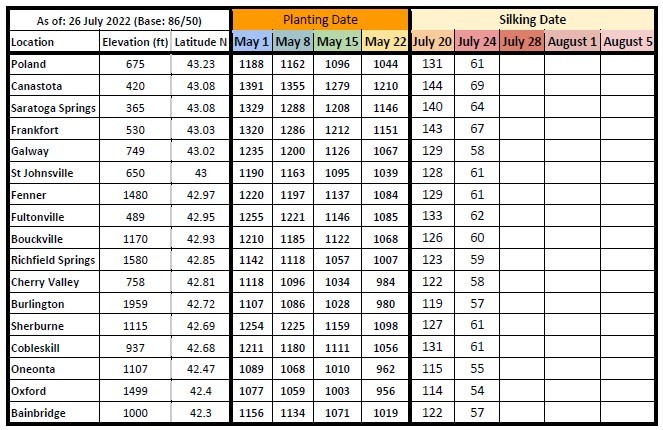
3. Pest and disease monitoring
Western Bean Cutworm (WBC) and Fall Armyworm (FAW) in corn
WBC is hot out of the gate across our region. I scouted the Chenango Co. field with the highest number for WBC egg masses (they prefer to lay eggs on the top surface of the uppermost leaves) but found none. Something to keep an eye on….
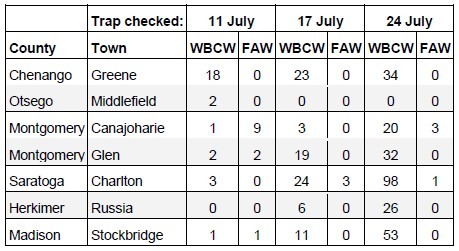
Potato leafhopper (PLH) in alfalfa - Fields sampled by Ashley Bound and Emily Anderson (CCE Chenango), working with local FFA chapters across our region to sweep alfalfa fields this year (funding provided by the Chobani Community Impact Fund):
Action thresholds are determined by comparing average crop height and average number of potato leafhoppers per sweep (3 sets of 10 sweeps in different parts of the field) using a 15" diameter sweep net.
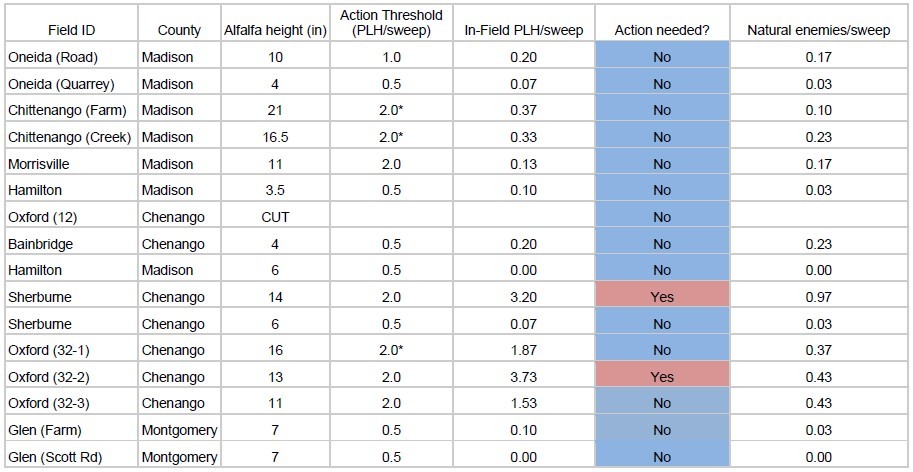
*No action needed if crop is within 1 week of cutting. If not, use a short-residual insecticide.
Upcoming Events
IPM Strategies to Protect Corn and Soybean Seed in NYS
July 22, 2025
Cobleskill, NY
Free event. DEC Credits available
Clearing Hurdles to Improve Milk Quality Conference
July 22 - July 24, 2025
Rochester, NY
three day conference with short courses, seminars, and farm tours
Announcements
Sign Up for Our Weekly E-Newsletter
We send out a bi-weekly e-newsletter that has announcements, upcoming programs, and opportunities for you! Registration is quick, easy, and free. Click here to sign up today!Document and Share Storm Damage
Mother nature has really been difficult over the last few days. Significant damage has been seen throughout NYS. Please let us know what types of damage your farm may have sustained during this time. This could be in the form of property damage, lost power, milk dump due to lost power, loss of livestock, loss of stored feed or growing crops.Farms are encouraged to DOCUMENT AND SHARE any impacts the weather may have had on their home or business. This could include structure damage, crop loss, inventory loss due to power outages, damage to equipment or fencing, and more.
If your farm experienced any sort of damage, please reach out to any of the folks listed below (or all of them). The more impact information that is collected, the greater the likelihood of a disaster declaration which can bring vital emergency support and awareness. The CNYDLFC Team will continue to collect detail and submit to NYSDAM and the EDEN network.
Reporting Weather Related Impacts (For your home or farm business)
- First, ensure that all the people and animals on your farm are safe, and that there aren't any unsafe working conditions created because of the weather (check your structures!). If there's an emergency, call 911 - don't try to manage it all on your own.
- Second, document all negative weather impacts for your farm and their estimated financial cost. Take photos, make estimates, and put it all in a safe place.
- Reach out to your insurance providers - farm, vehicle, crop, etc. to initiate the claim process as needed.
- Then, share your farm's damage with any (or all) of the ag support agencies listed below. We all work together to collect storm damage information and funnel it up to Ag and Markets which can initiate a natural disaster declaration.
- Chenango: 607-334-5841
- Fulton/Montgomery: 518-853-2135
- Herkimer: 315-866-7920
- Madison: 315-684-3001
- Otsego: 607-547-2536
- Schoharie: 518-234-4303
- Saratoga: 518-885-8995
- Erik Smith: 315-219-7786
- Daniela Gonzalez: 315-749-3486
- Ashley McFarland- 315-604-2156
Your county USDA/FSA service center.
- Chenango: 607-334-3231
- Fulton/Montgomery: 518-853-4015
- Herkimer: 315-866-2520
- Madison:315-824-9076
- Otsego: 607-547-8131
- Schoharie: 518-295-8600
- Saratoga: 518-692-9940
Your county farm bureau manager
- Region 3: Bailey Coon: 518-937-0566
- Region 5: John Wagner: 315-761-9770
- Region 6: Natally Batiston: 518-937-0269
- Region 7: Todd Heyn: 518-431-9338
Please let us know how we can help you.
Cash Rent and Custom Harvest Survey
To date, there is limited information available about rental rates and fees for crop harvesting. Farms can use this valuable information for their farm business planning to help improve decision making and profitability.Farmers Can Join MeatSuite For Free!
MeatSuite.com is a free resource provided by Cornell University where NY meat farmers can create a farm profile and list their bulk (wholes, halves, quarters) and bundled (i.e. Grilling Bundle) meat products.Why should farmers join?
1. It's free and easy!
2. Connect with more local customers. In the past year the MeatSuite.com farm directory had 8,300 visits from New York consumers. Farm profiles get as many as 25 views per month from potential local customers. We also spotlight MeatSuite farms on social media and bring attention and purchases to farms through highlights and giveaways.
How do I join?
Farmers can visit https://www.meatsuite.com/farmers/ to create a free farm profile. You must list at least one product for your farm's profile to go live. You'll also have access to Cornell's free Meat Price Calculator, a helpful tool for pricing your meat to make a profit.
While you're on MeatSuite, check out the "Creating Consumer-Friendly Bulk Meats" publication on the log-in page. It has tips on how to create bulk meat products that are easier for first-time buyers to say "yes" to.
If you have any questions as you create your farm profile or products, we're here to help! Please email Matt LeRoux at mnl28@cornell.edu.

